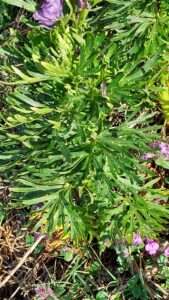How to Propagate Aconitum tauricum

Propagating Aconitum tauricum: The Challenges and Rewards of Cultivating the Caucasian Monkshood
Aconitum tauricum, also known as Caucasian Monkshood, is a striking perennial boasting tall, elegant spires of intensely coloured, hooded flowers, typically deep blue or purple. Its dramatic appearance makes it a highly desirable plant for gardeners seeking to add a touch of late summer drama to their borders, particularly those with a preference for shade. However, its beauty belies the challenges involved in its propagation. Its toxicity, a common feature of Aconitum species, necessitates careful handling, and successful propagation requires patience and precision. The unique aspects of cultivating this species derive from balancing its demanding requirements with the rewards of growing such an exceptional plant.
Seed Germination:
While seed germination is possible with Aconitum tauricum, it is notoriously difficult and inconsistent. The seeds possess a hard seed coat that inhibits germination, requiring stratification – a period of cold, moist treatment – to break dormancy. This mimics the natural winter conditions the seeds would experience in their native habitat.
Challenges: Low germination rates are common, even with stratification. Seedlings can be slow-growing and susceptible to damping-off (fungal disease).
Practical Tips: Stratify seeds for at least 8-12 weeks at temperatures just above freezing (e.g., in a refrigerator). Sow seeds in a well-draining seed compost, keeping them consistently moist but not waterlogged. Use a propagator with bottom heat to encourage germination.
Rewards: Seed propagation offers the greatest genetic diversity, enabling the creation of new strains and preserving the unique characteristics of wild populations. It also presents a potential method for large-scale cultivation.
Cuttings:
Propagating Aconitum tauricum from cuttings is a more reliable method than seed germination. Softwood or semi-hardwood cuttings taken in spring or early summer offer the best chance of success.
Challenges: Cuttings require high humidity and warm temperatures to root effectively. The success rate can be variable depending on the timing and technique. Rot is a significant risk if cuttings are not kept adequately ventilated.
Practical Tips: Take cuttings from healthy, actively growing stems, ensuring each cutting has a few nodes. Use a rooting hormone to enhance root development. Place cuttings in a humid propagator or cover them with a plastic bag to maintain high humidity.
Rewards: Cuttings produce genetically identical clones, preserving the desirable traits of the parent plant. This is a more efficient method for producing a larger number of plants compared to seed germination.
Division:
Division is a relatively simple and effective method for propagating established Aconitum tauricum plants. This should be done in spring or autumn.
Challenges: Established plants may be difficult to divide if the root system has become extensively intertwined. Damage to the roots during division can lead to plant losses.
Practical Tips: Carefully lift the entire clump, gently separate the crown into smaller divisions, ensuring each section has sufficient roots and growing points. Replant divisions immediately in well-prepared soil.
Rewards: Division ensures quick establishment of new plants, replicating the existing plant’s characteristics reliably. This method is particularly suitable for maintaining specific cultivars.
Tissue Culture:
While tissue culture is a viable option for mass propagation of many plants, it is not widely used for Aconitum tauricum and requires specialized equipment and expertise. Information on protocols is limited.
Challenges: Establishing a reliable tissue culture protocol for Aconitum tauricum would require significant research and investment. Contamination is a major risk.
Conclusion:
Propagating Aconitum tauricum presents unique challenges but offers significant rewards. While seed germination offers genetic diversity but is a low success rate, cuttings provide a more reliable method for producing clones of desirable plants. Division is best suited for established plants. Tissue culture remains an area needing further exploration. Ultimately, the satisfaction of successfully cultivating this captivating plant far outweighs the difficulties. The perseverance required to master its propagation is matched only by the dramatic beauty of its reward – a vibrant display of these magnificent, albeit challenging, flowers. Aspiring propagators should begin with cuttings or division, gaining experience before trying the more complex methods. Remember always to handle the plant with care, respecting its toxicity.